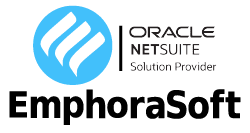
Debunking the Top 10 ERP Myths: What Every Business Needs to Know
In today’s competitive business landscape, Enterprise Resource Planning (ERP) systems have become essential tools for organizations seeking to streamline operations, improve efficiency, and drive growth. However, despite their widespread adoption, ERP systems remain surrounded by persistent myths and misconceptions that can significantly impact decision-making processes.
At Emphorasoft, we’ve worked with hundreds of businesses across various industries to implement successful ERP solutions. Throughout our experience, we’ve encountered numerous misconceptions that often prevent companies from realizing the full potential of these powerful systems. This comprehensive guide aims to debunk the top 10 ERP myths, providing clarity and insights to help you make informed decisions about your ERP journey.
Myth #1: ERP Is Only for Large Enterprises
Perhaps the most pervasive myth in the ERP world is that these systems are exclusively designed for large corporations with complex operations and substantial budgets. This misconception often deters small and medium-sized businesses (SMBs) from exploring ERP solutions, potentially limiting their growth potential.
The Reality
Today’s ERP landscape offers solutions tailored to businesses of all sizes. The evolution of cloud-based ERP systems, modular architectures, and subscription-based pricing models has democratized access to enterprise-grade technology. Modern ERP solutions can scale with your business, starting with essential functions and expanding as your organization grows.
Small businesses particularly benefit from ERP in several ways:
- Streamlined operations: Even small businesses juggle multiple functions—from inventory and sales to finance and customer service. An appropriate ERP solution integrates these areas, eliminating data silos and manual processes.
- Competitive advantage: The right ERP system enables smaller organizations to operate with the efficiency and professionalism of larger competitors, leveling the playing field.
- Growth readiness: Implementing ERP early creates a strong foundation for scaling. As your business expands, your systems won’t become bottlenecks that constrain growth.
Consider a small manufacturing company we worked with that initially believed ERP was beyond their reach. After implementing a right-sized solution, they experienced a 35% reduction in administrative work and a 28% improvement in on-time deliveries—proving that ERP benefits aren’t restricted by company size.
Myth #2: ERP Implementation Always Takes Years
Another common deterrent for businesses considering ERP is the belief that implementation is invariably a multi-year marathon that disrupts operations and drains resources. Horror stories about implementations that ran significantly over schedule have cemented this myth in business lore.
The Reality
While complex, enterprise-wide ERP implementations at large organizations can indeed span years, most modern ERP deployments follow a more agile, phased approach. Cloud-based solutions particularly have shortened implementation timelines dramatically.
Current implementation strategies focus on:
- Phased rollouts: Rather than attempting a “big bang” approach, successful implementations often prioritize core functions first, with additional modules deployed in subsequent phases.
- Industry-specific templates: Many ERP providers now offer pre-configured solutions tailored to specific industries, significantly reducing setup time and complexity.
- Rapid deployment methodologies: Modern implementation approaches emphasize speed and agility, focusing on achieving quick wins while building toward full functionality.
A mid-sized retail client of ours completed their initial ERP implementation in just four months, focusing first on inventory and order management before expanding to other areas. This approach delivered value quickly while minimizing disruption to daily operations.
The key factors determining implementation timeline include:
- Scope and complexity of requirements
- Level of customization needed
- Quality of data preparation and migration
- Organizational readiness and change management
- Selection of implementation partner
With proper planning, clear objectives, and realistic expectations, most businesses can achieve functional ERP implementation within 3-12 months, depending on complexity.
Myth #3: ERP Is Prohibitively Expensive
Cost concerns frequently top the list of reasons businesses hesitate to pursue ERP solutions. The perception that ERP requires massive capital expenditure and ongoing maintenance costs can make the technology seem inaccessible, particularly for growing businesses with limited resources.
The Reality
While ERP represents a significant investment, the landscape has evolved considerably in terms of cost structures and options. Cloud-based ERP solutions have revolutionized the financial accessibility of these systems by:
- Eliminating upfront hardware costs: Cloud ERP requires no physical server infrastructure, dramatically reducing initial investment.
- Subscription-based pricing: Software-as-a-Service (SaaS) models convert large capital expenditures into predictable operational expenses that scale with your business.
- Reduced IT overhead: Cloud providers handle maintenance, updates, and security, eliminating the need for extensive in-house IT resources.
Modern ERP also delivers measurable return on investment through:
- Reduced operational costs from automation and efficiency
- Lower inventory carrying costs through improved forecasting
- Decreased administrative expenses and manual data entry
- Improved decision-making through better business intelligence
- Enhanced customer satisfaction and retention
A distribution company we consulted achieved ROI within 14 months of implementation, primarily through inventory optimization and labor efficiency. Their cloud ERP subscription cost was offset by a 23% reduction in carrying costs and 18% decrease in order processing expenses.
When evaluating ERP costs, businesses should consider the total cost of ownership (TCO) alongside the cost of maintaining status quo with outdated or disconnected systems. Often, the cumulative costs of inefficiency, missed opportunities, and competitive disadvantage far outweigh the investment in modern ERP.
Myth #4: ERP Implementation Inevitably Fails
Perhaps one of the most damaging myths is that ERP implementations are destined to fail. Media coverage often highlights spectacular implementation failures while successful projects receive little attention, creating a distorted perception of risk.
The Reality
While ERP implementation challenges are real, the majority of properly planned and executed projects succeed in delivering significant business value. Research indicates that approximately 60-70% of ERP implementations meet their primary objectives, with failure rates declining as implementation methodologies mature.
Successful implementations share common characteristics:
- Clear business objectives: Successful projects define specific, measurable outcomes rather than vague goals like “improving efficiency.”
- Executive sponsorship: Strong, visible support from leadership ensures adequate resources and helps overcome organizational resistance.
- Comprehensive change management: Preparing the organization for new processes and systems is often more critical than technical implementation details.
- Realistic expectations: Understanding that perfect implementation is unattainable helps teams focus on achieving core business objectives while managing minor issues.
- Proper partner selection: Choosing implementation partners with relevant industry experience significantly increases success rates.
We worked with a healthcare services provider that had previously abandoned an ERP implementation. By addressing the root causes of the initial failure—inadequate requirements gathering and insufficient user training—their second attempt succeeded, delivering a 40% improvement in billing accuracy and substantial compliance benefits.
Implementation failure is not inevitable but rather the result of identifiable and preventable factors. Organizations that learn from others’ mistakes and follow proven implementation methodologies significantly reduce their risk.
Myth #5: ERP Requires Massive Customization to Be Useful
Many organizations approach ERP selection with the assumption that extensive customization is necessary to match their unique business processes. This belief often stems from reluctance to change existing workflows and concern that standard solutions can’t address specialized requirements.
The Reality
Modern ERP systems incorporate best practices from thousands of implementations across diverse industries. These embedded processes often represent more efficient approaches than company-specific legacy methods that evolved organically over time.
The most successful ERP implementations typically follow an 80/20 approach:
- Adopt standard functionality for approximately 80% of processes
- Customize only the 20% that truly differentiate the business or address unique regulatory requirements
Excessive customization introduces several risks:
- Higher implementation costs: Each customization requires design, development, testing, and documentation.
- Longer implementation timelines: Custom development extends project schedules.
- Upgrade complications: Heavily customized systems are more difficult and expensive to upgrade.
- Support challenges: Custom code may not be fully supported by the vendor.
A manufacturing client initially requested 27 major customizations to match their existing processes. After process analysis and system demonstration, they realized that 22 of these requirements could be met with standard functionality, configuration, or minor process adjustments. The resulting implementation was completed 30% faster and 25% under budget compared to the original customization-heavy approach.
Leading ERP systems now offer configuration options, user-definable fields, and workflow tools that allow extensive personalization without the drawbacks of traditional code customization. This approach maintains the integrity of the core application while providing necessary flexibility.
Myth #6: Cloud ERP Isn’t Secure Enough for Business-Critical Data
Security concerns remain one of the primary objections to cloud-based ERP solutions. Many executives worry that moving sensitive financial, operational, and customer data to the cloud increases vulnerability to breaches and data loss.
The Reality
Today’s cloud ERP providers typically deliver security capabilities that exceed what most organizations can implement internally. Major cloud platforms invest billions in security infrastructure, personnel, and processes that would be economically unfeasible for individual businesses to replicate.
Cloud ERP security advantages include:
- Dedicated security expertise: Leading providers employ specialized security teams that focus exclusively on protection measures.
- Comprehensive compliance: Major cloud ERP vendors maintain compliance with industry standards and regulations (GDPR, HIPAA, SOC 2, etc.).
- Automated patching: Cloud providers implement security updates immediately, eliminating the vulnerability window common with on-premise systems.
- Advanced threat detection: Cloud platforms employ sophisticated monitoring and threat intelligence systems to identify potential attacks.
- Redundant data protection: Geographic data replication and disaster recovery capabilities exceed typical on-premise implementations.
A financial services client initially resisted cloud ERP due to security concerns. After a thorough security assessment comparing their existing on-premise controls with the cloud provider’s capabilities, they discovered the cloud option actually reduced their overall risk profile while improving their compliance posture.
While no system is completely immune to security threats, properly configured cloud ERP solutions typically represent a security upgrade rather than a compromise for most organizations. The key is performing due diligence during vendor selection, understanding the shared responsibility model, and implementing appropriate access controls and governance.
Myth #7: Once Implemented, ERP Will Automatically Fix Business Problems
Some organizations approach ERP with unrealistic expectations, viewing it as a magic solution that will automatically resolve operational inefficiencies and business challenges without additional effort or process changes.
The Reality
While powerful, ERP systems are tools rather than solutions in themselves. They enable business improvement but require thoughtful implementation, process optimization, and organizational adoption to deliver their potential value.
Successful ERP implementations recognize that:
- Technology amplifies processes: ERP will make good processes better and can make poor processes worse by executing them more efficiently.
- Data quality matters: The value of an ERP system depends largely on the accuracy and completeness of its data.
- User adoption is critical: Even the most sophisticated system delivers limited value if users work around it or use it incorrectly.
- Process optimization should precede implementation: Automating inefficient processes merely produces faster inefficiency.
- Continuous improvement is essential: Maximum value comes from ongoing refinement and expansion of ERP capabilities.
A retailer we advised initially struggled with their ERP implementation despite using industry-leading software. Investigation revealed they had essentially digitized inefficient manual processes without redesigning workflows or adequately training staff. After process reengineering and focused training, the same system delivered transformative results.
Rather than viewing ERP as an automatic solution, successful organizations treat it as a powerful enabler within a broader business improvement strategy. This perspective leads to realistic expectations and more effective implementation approaches.
Myth #8: ERP Is Too Rigid and Will Force Standardization
Many companies fear that implementing ERP will force them into rigid, standardized processes that don’t accommodate the unique aspects of their business or provide needed flexibility for future changes.
The Reality
Modern ERP systems have evolved significantly from the inflexible platforms of previous generations. Today’s solutions balance standardization benefits with the flexibility needed to accommodate legitimate business variations.
Contemporary ERP platforms offer multiple dimensions of adaptability:
- Configuration options: Most systems provide extensive settings to adjust functionality without coding.
- Role-based interfaces: Users see only the functions and data relevant to their responsibilities, creating tailored experiences without customization.
- Business rules engines: Many platforms allow defining complex logic and workflows through configuration rather than programming.
- Integration capabilities: API-driven architectures enable connection with specialized systems for unique requirements.
- Low-code/no-code extensions: Some platforms allow creating custom functionality through visual development tools.
A multi-division client leveraged these capabilities to implement a single ERP instance that accommodated three distinct business models. Core financial and HR functions used standardized processes, while customer-facing operations maintained division-specific workflows—all within a unified system.
The key is distinguishing between processes that deliver competitive advantage (deserving customization) and those where standard approaches are actually beneficial. This balanced perspective leads to implementations that provide both operational consistency and business flexibility.
Myth #9: ERP Projects Are Primarily IT Initiatives
A dangerous misconception that contributes to many implementation challenges is the belief that ERP is fundamentally a technology project that should be driven and owned by the IT department.
The Reality
Successful ERP implementations are business transformation initiatives enabled by technology, not technology projects with business impacts. While IT plays a crucial role, business leadership and cross-functional involvement are essential to success.
Effective ERP projects recognize that:
- Business outcomes drive technology decisions: Requirements should flow from strategic objectives and operational needs.
- Process ownership resides in business units: Those who perform the work should define how it should be done, with IT providing enablement.
- Cross-functional collaboration is essential: ERP affects multiple departments whose needs must be balanced against overall business priorities.
- Change management is primarily a business function: Preparing users for new ways of working requires business leadership and cannot be delegated to IT.
- Executive sponsorship from business leaders: Visible support from business executives signals importance and ensures adequate resources.
A consumer goods manufacturer achieved remarkable success by establishing a governance structure where IT served as technical advisors while business leaders made key decisions and drove adoption. Their executive sponsor conducted regular town halls explaining how the ERP initiative supported strategic business goals, creating organizational alignment that IT alone could never have achieved.
Organizations that approach ERP as a business initiative supported by technology consistently outperform those that delegate responsibility to IT departments. This perspective ensures that technical choices align with business priorities and that the implementation delivers meaningful operational value.
Myth #10: ERP Implementation Is a One-Time Project
The final misconception many organizations hold is viewing ERP implementation as a discrete project with a definitive endpoint. This perspective often leads to insufficient planning for ongoing management and evolution of the system.
The Reality
While initial implementation represents a significant milestone, realizing the full potential of ERP requires treating it as a continuous improvement journey rather than a finite project. The most successful organizations establish sustainable governance models that support ongoing optimization.
Effective post-implementation approaches include:
- Dedicated system ownership: Assigning clear responsibility for system health and evolution prevents degradation over time.
- Continuous user training: Ongoing education addresses knowledge gaps and ensures proper utilization as personnel changes occur.
- Regular process reviews: Periodic assessment of workflows identifies optimization opportunities and prevents process drift.
- Capability expansion: Phased activation of additional functionality maintains momentum and delivers incremental value.
- Data governance: Ongoing attention to data quality preserves system integrity and analytical capabilities.
A professional services organization we supported established a center of excellence model after their initial implementation. This team identified and implemented over 30 system optimizations in the first year, delivering an additional 15% productivity improvement beyond the initial implementation benefits.
Organizations that establish governance structures for continuous improvement typically achieve 30-40% more value from their ERP investments compared to those who treat implementation as a one-time event. This ongoing attention ensures the system evolves with changing business needs and technological advancements.
Making Informed ERP Decisions: Beyond the Myths
Having addressed these persistent myths, it’s clear that ERP systems, when properly selected and implemented, offer tremendous potential for business transformation across organizations of all sizes and industries. The key to success lies in approaching these powerful platforms with realistic expectations and appropriate implementation strategies.
Critical Success Factors
Our experience guiding hundreds of ERP implementations has identified several factors that consistently differentiate successful projects:
- Clear business case and objectives: Defining specific, measurable outcomes provides direction and enables proper evaluation of success.
- Executive championship: Visible support from leadership creates organizational alignment and ensures adequate resources.
- Appropriate scope management: Starting with critical processes and expanding in phases reduces risk and accelerates value delivery.
- Comprehensive change management: Preparing the organization for new processes is often more important than technical configuration details.
- Data readiness: Addressing data quality before migration prevents “garbage in, garbage out” scenarios that undermine system effectiveness.
- Honest vendor evaluation: Selecting partners based on cultural fit and domain expertise rather than simply features and price improves implementation outcomes.
- Realistic resource allocation: Providing adequate business resources for requirements, testing, and adoption activities prevents quality compromises.
Industry-Specific Considerations
While the myths we’ve debunked apply broadly, different industries face unique ERP challenges and opportunities:
- Manufacturing: Integration between shop floor systems and ERP often represents the greatest challenge and opportunity.
- Distribution: Advanced warehouse management and logistics capabilities typically deliver the most significant value.
- Professional Services: Resource management and project accounting functionality usually drive the strongest ROI.
- Retail: Omnichannel inventory visibility and customer experience integration commonly represent critical success factors.
- Healthcare: Compliance requirements and integration with clinical systems present unique implementation considerations.
Looking Forward: The Evolving ERP Landscape
As we look to the future, several emerging trends are reshaping the ERP landscape:
- AI and machine learning integration: Predictive analytics and intelligent automation are enhancing ERP capabilities in areas ranging from demand forecasting to anomaly detection.
- Industry cloud solutions: Vertical-specific cloud platforms are combining core ERP with industry-specialized functionality.
- Composable architecture: API-first approaches enable organizations to assemble tailored solutions from best-of-breed components.
- Low-code/no-code extensions: These capabilities allow business users to create custom functionality with minimal IT involvement.
- Enhanced analytics: Embedded business intelligence tools are making data more accessible and actionable.
These advancements are making ERP even more accessible, flexible, and valuable across business sizes and industries.
Conclusion: Embracing ERP as a Strategic Asset
Enterprise Resource Planning systems represent powerful tools for business transformation when approached with appropriate expectations and implementation strategies. By moving beyond persistent myths and understanding the realities of modern ERP, organizations can make informed decisions that align technology investments with business objectives.
The most successful companies view ERP not merely as a software system but as a strategic asset that enables operational excellence, data-driven decision making, and sustainable growth. This perspective, combined with pragmatic implementation approaches, consistently leads to implementations that deliver meaningful business value.
At Emphorasoft, we’re committed to helping organizations navigate the complexities of ERP selection, implementation, and optimization. By partnering with experienced advisors who understand both the technical and business dimensions of enterprise systems, you can maximize the return on your ERP investment while minimizing risk.
FAQ's
A hybrid IT ecosystem combines on-premises infrastructure, private/public cloud resources, and edge computing. It enables organizations to process data where it’s most efficient while maintaining central control through systems like NetSuite.
NetSuite serves as the cloud-based ERP backbone, providing real-time data, centralized management, and integrated business processes. Its open APIs and SuiteCloud platform allow seamless integration with edge computing solutions that handle time-sensitive tasks.
Edge computing reduces latency and bandwidth usage by processing data locally. When combined with NetSuite’s centralized ERP functions, organizations enjoy faster response times, improved operational efficiency, and enhanced resilience during connectivity disruptions.
Manufacturing, retail, field service, and warehouse management benefit greatly. For example, edge devices on factory floors can process real-time machine data, while NetSuite updates inventory and scheduling centrally.
Challenges include integration complexity, data consistency between distributed systems, security across multiple environments, and finding talent with expertise in both cloud ERP and edge computing.
Organizations can implement middleware, use standardized APIs (like NetSuite’s SuiteTalk and RESTful services), and adopt an incremental, pilot-based deployment approach to streamline integration between cloud ERP and edge devices.
Data flow mapping helps determine which data requires real-time, edge-level processing versus batch processing in the cloud. This clarity guides integration architecture, ensuring efficient use of both cloud and edge resources.
By processing data locally, edge devices can continue operations even when cloud connectivity is interrupted. Once connectivity is restored, data is synchronized with NetSuite, ensuring continuity and minimizing downtime.
An API-first approach—embodied by NetSuite’s SuiteTalk and SuiteScript—enables real-time data exchange and interoperability. It simplifies the integration process between cloud ERP functions and edge computing applications.
Continuous monitoring, regular security audits, performance reviews, and iterative improvements are essential. Organizations should also invest in training and external expertise to adapt their infrastructure as business needs evolve.







